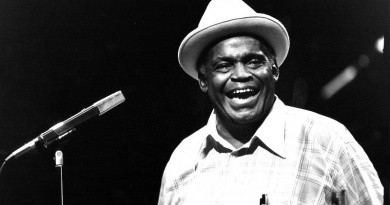Remembering the legendary “Dracula” Bela Lugosi on his anniversary
Bela Lugosi who’s famous for bringing to life Count Dracula was born 141 years ago today
Remembering the legendary “Dracula” Bela Lugosi on his anniversary
Just 11 days before Halloween is the birth of charismatic Hungarian actor, Bela Lugosi, the most iconic of all Draculas. He’d starred in the stage show based on Bram Stoker’s horror story, but, according to Wikipedia, he may not have been the first choice to play Dracula in the 1931 movie. Lon Chaney might have been in the offing, but his death put paid to that idea. Lugosi’s birthplace was only some fifty miles away from the western border of Transylvania and the Poenari Castle, the legendary home of Vlad the Impaler, the historical Dracula, whom Lugosi would portray to great acclaim on both stage and screen. Born Bela Ferenc Dezso Blaskoon on this day October 20, 1882, in Lugos, The Kingdom of Hungary. Although descended from a long line of Hungarian farmers, Lugosi’s father, Istvan Blasko, broke with family tradition to become a baker and banker. By the early 1900s, Bela Lugosi had been accepted into Hungary’s Academy of Performing Arts with a specialty in Shakespearean acting. Adopting the name “Lugosi” as a reference to his birthplace of Lugos, throughout the first decade of the 20th century he toured the Austro-Hungarian Empire performing male lead roles in such Shakespearean classics as “Romeo and Juliet”, “Hamlet”, “Richard III” and “The Taming of the Shrew”. In 1913, he joined the Hungarian National Theater in Budapest and starred in more Shakespearean plays. In June 1914 the highly patriotic Lugosi put his acting career on hold to fight for Hungary against Russia in World War I. After being discharged from the army due to health problems in 1916, Lugosi returned to the National Theater and delivered a celebrated performance as Jesus Christ in “The Passion”. Over the next few years, Lugosi gradually transitioned from stage acting into Hungary’s rapidly growing silent film industry.
In addition to acting in many silent Hungarian films, Lugosi organized Hungary’s National Trade Union of Actors, the world’s first film actors’ union. He was a staunch supporter of the 1919 Hungarian Revolution that briefly brought Bela Kun’s Hungarian Soviet Republic into power, and as a result when the revolution collapsed Lugosi found himself a wanted enemy of the new government. “After the war, I participated in the revolution,” he said. “Later, I found myself on the wrong side.” In 1919, Lugosi fled to Vienna, as legend has it buried beneath a pile of straw in a wheelbarrow. From there he traveled to Berlin where he quickly found work in the German cinema. Lugosi appeared in several German films in 1920, most notably “The Head of Janus”, an adaptation of Robert Louis Stevenson’s “Dr. Jekyll and Mr. Hyde”. Despite this quick success in Germany, Lugosi decided to immigrate to the United States; after a brief stop in Italy, he set sail for New Orleans, arriving on December 4, 1920. From there he immediately made his way to New York City, where an already sizeable Hungarian theatrical community welcomed him with open arms. Lugosi plunged himself into New York’s Hungarian theater as an actor and director of many Hungarian productions over the next several years. Despite not yet having a firm grasp of the language, he made his English-language stage debut in a 1922 production of “The Red Poppy”. Since silent films still predominated, Lugosi’s language skills were not a barrier to his acting in American movies. He made his American film debut in “The Silent Command” (1923) and then appeared in “The Midnight Girl” (1925). In 1927, Lugosi accepted the titular role in the American theatrical run of “Dracula”, a play based on Bram Stoker’s gothic novel of the same name. Lugosi’s Dracula was at once so sexy and so haunting that audiences gasped when he first opened his mouth to speak. After a half-year run on Broadway, Dracula toured the United States to much fanfare and critical acclaim throughout 1928 and 1929. With the popularization of “talking pictures” – movies with sound – Universal decided to make a film version of “Dracula” starring Lugosi. The 1931 film, entitled “The Strangest Passion the World Has Ever Known”, was a smash hit and forever immortalized Lugosi’s chilling portrayal of Dracula. Although countless actors have played Dracula since, to this date vampire enthusiasts idolize Lugosi as synonymous with the character.
Throughout the 1930s, Lugosi was typecast as a Hollywood horror villain – playing monsters, murderers and mad scientists – in dozens of B-list films. After a few lean years in the late 1930s, when horror movies fell out of vogue in Hollywood, in the 1940s Lugosi once again began appearing in countless horror films as well as sequels and spoofs such as “The Ghost of Frankenstein” (1942), “Frankenstein Meets the Wolf Man” (1943) and “Bud Abbott and Lou Costello Meet Frankenstein” (1948). Despite his prolific acting career and high profile, due to Universal’s ruthless compensation system and his own careless spending, Lugosi lived the majority of his adult life deeply mired in debt. He spent the last few years of his career in the early 1950s back on the stage in revival productions of “Dracula” as well as “Arsenic and Old Lace”. In 1956, Lugosi began work on a sci-fi thriller called “Plan 9 From Outer Space”. However, he passed away in the middle of filming on August 16, 1956, aged 73. Lugosi was fittingly buried in his Dracula cape. “Plan 9 from Outer Space” was completed with director Ed Wood’s wife’s chiropractor taking over his part. The final version of the film bizarrely mixes footage of Lugosi as well as footage of his replacement (who looks nothing at all like him), one of many oddities that make “Plan 9 From Outer Space” both a cult classic and a film many critics have called the worst of all time. Lugosi lives on for posterity not so much as an actor but as the personification of his greatest character. When he performed as Dracula, Lugosi spoke for his own personal legacy as much as for his character when he pronounced the immortal line, “I am Dracula.”
By Ken Warren, 2017/18
Look back at Bela Lugosi as Dracula in the 1931 movie “Dracula”
Watch more related videos
Images and photographs can be from different ranges of sources such as Pinterest, Tumblr etc. except when/where noted. If you are the copyright holder and would like them removed or credited, please get in touch.

















